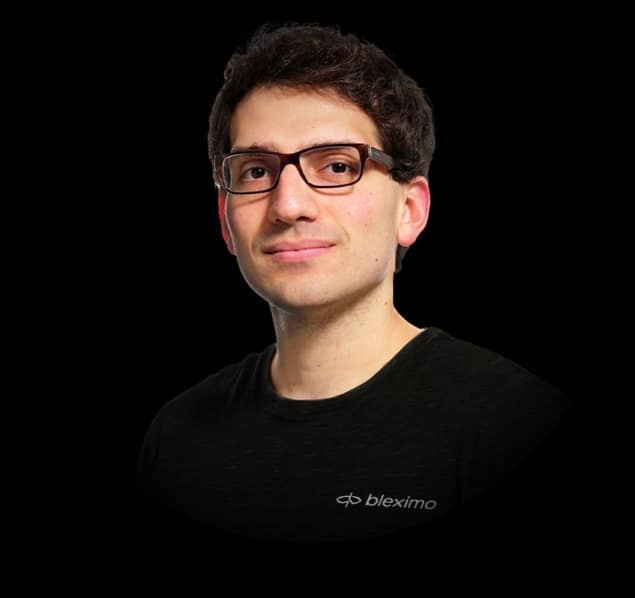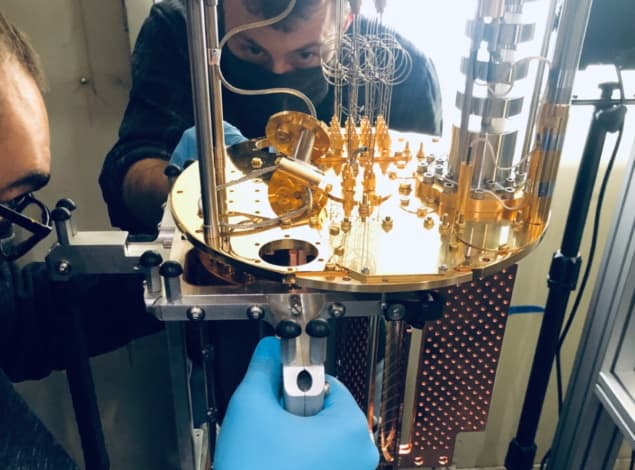Bleximo builds its competitive advantage with an application-specific approach
10 Jun 2022 Sponsored by Bleximo
The key to achieving ‘quantum advantage’ lies in the co-design of algorithms and hardware for a new generation of superconducting quantum computers
California-based start-up Bleximo is betting that its application-specific approach to quantum computing is more efficient – indeed transformative – in addressing highly complex practical problems across a range of industries – from global logistics and aerospace to pharmaceuticals, advanced materials, and energy production and distribution. The company, which is “powering innovation through quantum computing”, has been developing full-stack, superconducting application-specific computing systems since 2018, working with high-profile R&D partners such as the University of California Berkeley and Lawrence Berkeley National Laboratory as well as other companies in the quantum computing ecosystem.
Strategic differentiation comes with Bleximo’s co-design methodology, where coding and hardware design follow each other, with the focus on boosting a particular algorithm’s execution speed. The underlying holistic approach to product development, covering everything from the fundamental physics of superconductors to the software architecture of a deployed quantum computing system, integrates algorithms, software and hardware into one platform.
That unified development strategy is similar for all use cases, though each computing system may require changes and enhancements specific to a given application. As such, it is fundamental to Bleximo’s business model to collaborate closely with customers and R&D partners – whether government agencies, national laboratories, academic institutions or other technology companies – to ensure a granular understanding of their respective workflow pain-points and downstream computing requirements.
Co-design and collaboration
Fabio Sanches is head of quantum engineering at Bleximo, working with customers to develop targeted quantum algorithms that address their difficult computational problems while building a software framework for algorithm and hardware co-design. The raison d’être for application-specific quantum computers, says Sanches, is to address a challenge the customer faces from a high-performance computing standpoint. “The customer will typically have a problem that takes a lot of computing power and a considerable amount of time – even with access to leading-edge computing resources,” he explains. “These problems are the best candidates for studying the efficacy and upside of quantum computing solutions.” Fabio Sanches: “We take the physics of the entire stack into account when engineering quantum computing systems.” (Courtesy: Bleximo)
Fabio Sanches: “We take the physics of the entire stack into account when engineering quantum computing systems.” (Courtesy: Bleximo)
 Fabio Sanches: “We take the physics of the entire stack into account when engineering quantum computing systems.” (Courtesy: Bleximo)
Fabio Sanches: “We take the physics of the entire stack into account when engineering quantum computing systems.” (Courtesy: Bleximo)Starting with a specific class of practical problems – for example, supply-chain optimization or the pricing of financial products – the task for Sanches and colleagues is to understand what quantum algorithms make sense to tackle the problem in question. The end-game of shortened execution times and faster operation hinges on the tight interworking between Bleximo’s algorithms team and the hardware engineering function.
“This is the back-and-forth where we add value for our customers,” notes Sanches. “Ultimately, because quantum computers are best suited for certain problems, we think it makes sense to build systems wholly tailored to those tasks by co-developing quantum algorithms, quantum processors and supporting hardware that are tuned for these specific applications.”
Bringing down the cost and complexity
The application-specific approach, in turn, means that Bleximo is able to eliminate a lot of the hardware overhead associated with quantum computing systems, driving down the upfront investments. “Our mantra is lower complexity translates into higher reliability and lower capital and operational costs,” explains Chiara Pelletti, the company’s director of hardware engineering. At the system sharp-end, this means qubits and couplers – as well as processor components, microwave controllers and other hardware building blocks – are only added on a “must-have” rather than “nice-to-have” basis.
“The objective is to figure out the best architecture for an application-specific quantum processor – how many qubits of different types are required and how they connect to each other – and to engineer the hardware to ensure it can run specific gate operations efficiently,” adds Pelletti. Put another way: design the simplest architecture possible in hardware to provide the necessary capabilities for the software, while also building a platform with the potential to scale to a larger number of qubits over time. Chiara Pelletti: “Lower complexity translates into higher reliability and lower capital and operational costs.” (Courtesy: Bleximo)
Chiara Pelletti: “Lower complexity translates into higher reliability and lower capital and operational costs.” (Courtesy: Bleximo)
 Chiara Pelletti: “Lower complexity translates into higher reliability and lower capital and operational costs.” (Courtesy: Bleximo)
Chiara Pelletti: “Lower complexity translates into higher reliability and lower capital and operational costs.” (Courtesy: Bleximo)To streamline the design of those application-specific superconducting quantum processors, Pelletti and her team have developed a software tool for quantum chip optimization – in effect, automated chip layout for the optimal placement of all processor components. “The workflow includes fine-tuning increasingly larger processor areas with the goal of meeting specifications and improving the coherence time, which is the time a qubit can basically ‘stay alive’,” she adds. “Engineering couplings to speed up gate and readout processes while reducing noise levels allows us to increase the number of operations that can be executed while the processor remains coherent.”
Zooming in, the core technical drivers for Pelletti and her team are eliminating any interference that might affect the qubit operation; engineering the platform to reduce classical cross-talk; and introducing ad-hoc filtering devices to the chip itself to protect the qubits from decoherence. Careful choices around packaging technology are also essential to maximize coherence, while a data-driven approach to chip design underpins everything, including experimental verification (and iteration) of key performance metrics and their dependence on microfabrication processes, chip packaging, cryogenic operating conditions and the control electronics.
It’s all about the people
Technology differentiators notwithstanding, the Bleximo value proposition is all about its people – or more precisely, the alignment of the team’s collective domain knowledge and expertise versus the fast-moving requirements of the nascent quantum computing industry. “On the hardware and software side, our strength lies in having a talented mix of engineers – focused on operational execution and issues like scalability, manufacturability and reproducibility – working alongside scientists geared up for ground-breaking applied research,” explains Sanches.
Bleximo, for its part, is also unique in having a team of mechanical engineers with specialist know-how in cryogenic science and technology – specifically, the dilution refrigerator subsystems and specialized wiring needed to achieve ultralow-temperature operation of the superconducting quantum processors. “We can take the physics of the whole quantum computing system into account because of our in-house expertise across a range of disciplines,” adds Sanches. “In this way, we’re creating solutions to address the fundamental problems with this emerging technology – solutions that will ultimately take computing power into uncharted territory.”
More broadly, argues Pelletti, quantum computing represents a compelling career pathway for talented graduate and postgraduate students in the physical sciences and engineering, especially those with an interest in continuous problem-solving at the interface between cutting-edge physics and technology development. “Joining a start-up is a great way to gain exposure to all the core disciplines in the field – processor design, testing, cryogenics and algorithm development – so you can figure out where your preference lies,” she concludes.
from physicsworld.com 11/6/2022

Δεν υπάρχουν σχόλια:
Δημοσίευση σχολίου